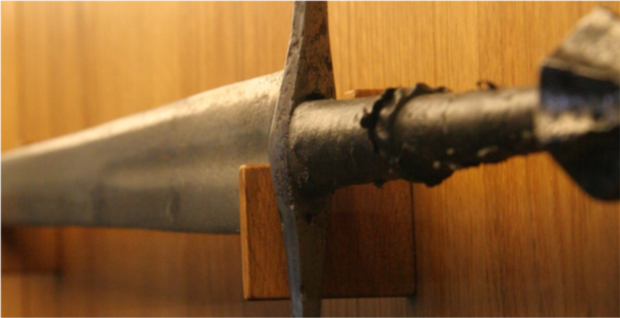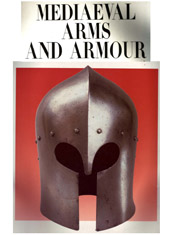I want the sword Albion exclude from this discussion.
For all of us, it is a good sword.
The debate is simply philological and historical.
I have studied, only two swords, the St. Maurice and the sword of Brescia, a little bit the XIII
Oakeshott.
I collected lots of information about the two swords.
But I can say to know a little, only the two swords.
The type of wood, and configuration of the grip and the skin.
Other things, for truth, but prefer not to talk about this, now.
I am a fan of medieval swords. In other words, a beginner.
I read some books, but studying is a different thing.
This to me is an advantage. My cup of knowledge is empty.
I can think and change my opinion, much more quickly.
I do not have to filter, the new proposals, with thoughts already acquired.
That there is something controversial, in this section, it seems clear.
Lionello Boccia in his rare book, writes, section lenticular.
A note magazine, writes: lenticular section.
A prof. University writes: lenticular section.
Some friends oplology write: lenticular section.
It would be wrong to consider these people, simple compilers card catalog from the museum,
I know these people, I can ensure that students are serious and worthy of consideration.
Some of these have had in they hands the sword of brescia.
From the photos I have already said, that some reinforce the hypothesis of a diamond section.
More for a lenticular section, other photos show a flattened diamond for diamond, but a little round
to be lenticular.
This is for intellectual honesty.
Power of history. One fact, two views.
(I say this without wishing to be argumentative with anyone. I see only one reality).
I will guess that that section, we want to classify it right.
Here the thought of my dear friend, he saw very well this sword:
"A very unusuals section to say the least. First a sort of flat diamond, then almost "erased
diamond" shape. All in all it seems as if it has no clear shape".
Perhaps it's easier. You can not classify.
At least not with the normal ways in which we classify other sections.
Many swords are easily recognizable.
I try to make an argument.
I have a little knowledge of sharpening.
None sharpen, repeatedly a lenticular section following the round.
It follows an angle, it is easier.
Sharpening should be excluded, is not part of the section.
If the sharpening is not part of the section, then that section is or lenticular or diamond.
We establish a common rule to determine the section.
Those corners are part of the sides of the section or sharpening?
If they are sharpening, that section is simply a diamond, or just lenticular, or the two combined.
(But not a diamond section to 8 faces)
Another question.
Classification Oakeshott?
For me, it is already difficult to classify as XVIa, perhaps a hybrid with an Type XVIIIa , and now a hybrid section.
My conclusion: Not classifiable Oakeshott.
Am I a Freelance? is possible, maybe this happens when the cup of knowledge is empty.
I always say, if I write less, I am more likely to commit fewer errors.
Always very long posts. I apologize.
Maurizio.
here another one.
 Attachment: 114.03 KB
Attachment: 114.03 KB

copyright Museo Balzoli - Brescia

